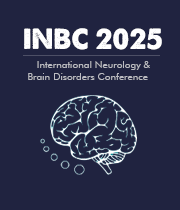Title : Safety, tolerability and efficacy of ALMB-0166 in the patients with acute Spine Cord Injury (SCI): A multicenter, randomized, placebo-controlled, phase I/II study
Abstract:
Introduction: There are currently significant unmet medical needs for therapies that improve the recovery of neurological function after suffering a severe SCI. ALMB-0166 is a first-in-class humanized monoclonal IgG antibody that block connexin-43 (Cx43) hemichannels in spinal cord astrocytes, in turn decreasing astrocyte/microglia activation and axonal degeneration that follows acute SCI. Also, by blocking these hemichannels, ALMB-0166 has demonstrated to prevent release of ATP, glutamate, ions, and other molecules that contribute towards excitotoxicity, inflammation, and metabolic stress, and therefore, have the potential to prevent further injuries following SCI and promote neurological recovery.
Methods: Eligible patients were those who had an acute SCI with American Spinal Injury Association (ASIA) levels at C3 and below levels, who had ASIA impairment scale (AIS) B or C, and who were randomized within 72 hours of their injury. Patients were randomized to receive a single dose of ALMB-0166 200, 600 (2:1) and 1200, 2400, 4800 mg (3:1) or placebo administrated intravenously with best supportive care. Primary outcomes were safety and tolerability.
Results: 25 patients with C3-C7 SCI were enrolled and 24 patients received treatment with investigational drugs (each 4 in 200 and 600 mg groups, each 3 in 1200, 2400, 4800 mg groups, 7 in placebo group). Treatment emergent adverse events (TEAEs) of any grade occurred in 94.1% (16/17) and 100% (7/7) of ALMB-0166 and placebo treated patients, respectively. TEAEs of ≥grade 3 were 17.6% (3/17) with ALMB-0166 and 42.9% (3/7) with placebo, commonest being hypokalemia, pulmonary inflammation, respiratory failure, and deep venous thrombosis (each 1 patient) with ALMB-0166 and hypokalemia (2 patients), hyponatremia (1 patient) with placebo. No deaths occurred.
At day 56, patients treated with ALMB-0166 had improvement as compared with those given placebo in motor function (scores increased from baseline by 66.0 for 2400 mg and 45.6 for placebo), sensatory function (scores increased from baseline by 77.5 and 62.7 for 600 and 1200 mg, respectively, and 52.3 for placebo), AIS (2 patients recovered from grade C to grade E for ALMB-0166 and 0 patient recovered to grade E for placebo), and pain (Visual Analogue Scale scores decreased from baseline by 44.3, 23.7 for 1200 and 2400 mg and 20.9 for placebo).
Conclusion: ALMB-0166 demonstrated great safety profile and improved neurologic recovery in patients with acute SCI.



